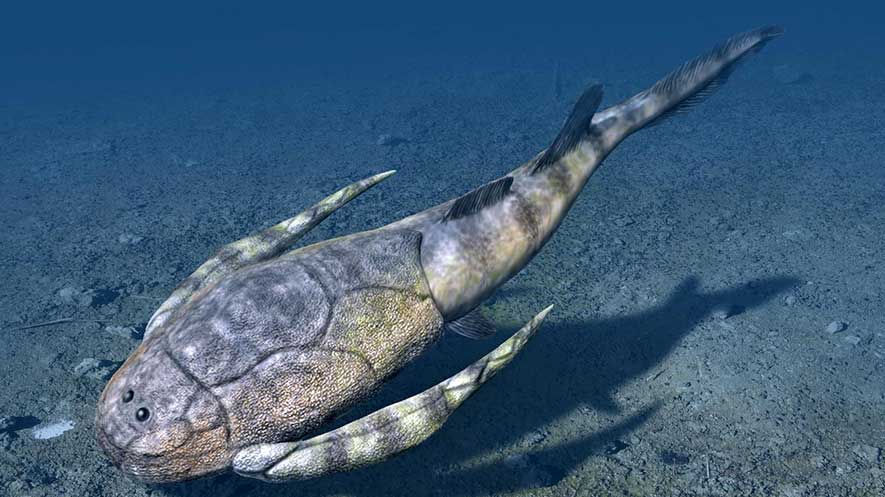Coral reefs are one of the most biodiverse environments on the planet and for years scientists have suspected that the origins of vertebrate life may have started there. However, a new study published in Science last week has provided a wealth of evidence to suggest that the earliest fish species originated in shallow waters instead.
"In modern conceptions, we see that coral reefs are so important for fish biodiversity, so we assume there's an ancient link between fishes and reefs going back to the beginning," says Lauren Sallan, a paleobiologist at the University of Pennsylvania and first author of the study. "But decades of searching in places like the Cincinnati Arch have come up empty."
"Our work shows that almost every major vertebrate division, from the earliest armored jawless fish all the way up through sharks and our own ancestors, all started out right near the beach, far inshore of the reef. Even as older groups spread out, newer groups were also appearing at the shoreline."
The team created a massive data set to help them understand the origins of vertebrates. Using the fossil record and already existing data on family tree relationships from the middle Paleozoic era, 480 to 360 million years ago, the researchers created a database that involved 2,728 early records for jawed and jawless fishes. Mathematical modeling was then used to fill in the gaps in the data allowing them to make predictions on the type of environment these primitive fish lived in.
"The nice thing about the fossil record is that we often find fishes in the context of where they live," Sallan says. "The rock that holds them tells us what their environment looked like, whether it was a reef, shallow water, deep water, a riverbed, or a lake."
"They often went to freshwater before the reefs, which is almost an independent line of evidence that they would have had to have been close to shore before doing so," Sallan says.
Sallan and colleagues noted that the early vertebrates seemed to stay in shallow waters for a long period of time and became well adapted to living both along the seafloor and in the deeper waters of the ocean.
A study like this has never been done before on living vertebrates, but the researchers want to understand whether these shallow waters are still acting as the biological pump which feeds coral reefs. They believe that if this is the case, the mass extinction of reefs around the world and the loss of biodiversity as a result of it may be offset by the diversification found in shallow oceanic waters.
By Ellis Moloney
Lauren Sallan, Matt Friedman, Robert S. Sansom, Charlotte M. Bird, Ivan J. Sansom. (2018). The nearshore cradle of early vertebrate diversification. Science, Vol. 362, Issue 6413, pp. 460-464, DOI: 10.1126/science.aar3689



